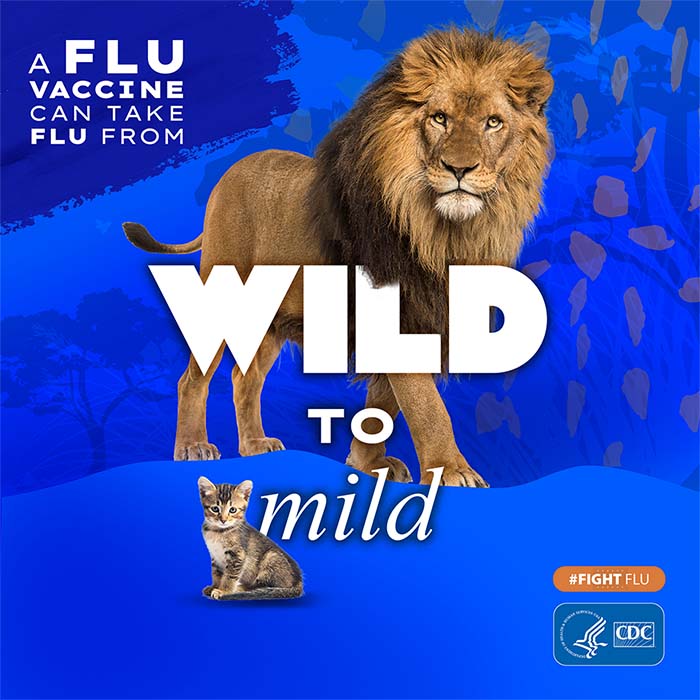Dosage, Administration, and Storage of Influenza Vaccines
Storage of Influenza Vaccines
In all instances, approved manufacturer packaging information should be consulted for authoritative guidance concerning storage of all influenza vaccines. Vaccines should be protected from light and stored at recommended temperatures. In general, influenza vaccines should be refrigerated between 2° to 8° C (36° to 46° F) and should not be frozen; vaccine that has frozen should be discarded. Single-dose vials should not be accessed for more than 1 dose. Multi-dose vials should be returned to recommended storage conditions between uses, and once accessed should not be kept beyond the recommended period of time. In addition, the cold chain must be maintained when LAIV4 is transported. For information on permissible temperature excursions and other departures from recommended storage conditions that are not discussed in the package insert, contact the manufacturer. Vaccine should not be used after the expiration date on the label.
Dosage and administration:
Inactivated Influenza Vaccines (IIVs)
All IIV preparations contain 15 µg of HA per vaccine virus strain (45 µg total for IIV3s and 60 µg total for IIV4s) per 0.5 mL dose, with two exceptions. Fluzone High Dose (Sanofi Pasteur, Swiftwater, Pennsylvania), an IIV3 licensed for persons aged ≥65 years, contains 60 µg of each HA per vaccine virus strain (180 µg total) (456). Fluzone Intradermal Quadrivalent (Sanofi Pasteur, Swiftwater, Pennsylvania), an intradermally administered IIV4 licensed for persons aged 18 through 64 years, contains 9 µg of each HA per vaccine virus strain (36 µg total) (457).
The one IIV product currently licensed by FDA for children aged 6 through 35 months contains 0.25 mL/dose, containing 7.5 µg of HA per vaccine virus strain (Fluzone Quadrivalent; Sanofi Pasteur, Swiftwater, Pennsylvania). The 0.25 mL dose may be administered from a prefilled single-dose syringe, single-use vial, or multi-dose vial of this age-appropriate formulation. Children aged 36 months through 18 years, and adults receiving IM preparations of IIV, should receive a 0.5 mL dose (containing 15 µg of HA per vaccine virus strain). If a pediatric vaccine dose (0.25 mL) is administered inadvertently to an adult, an additional pediatric dose (0.25 mL) should be administered to provide a full adult dose (0.5 mL). If the error is discovered later (after the patient has left the vaccination setting), an adult dose should be administered as soon as the patient can return. Vaccination with a formulation approved for adult use should be counted as a dose if inadvertently administered to a child.
With the exception of Fluzone Intradermal Quadrivalent (Sanofi Pasteur, Swiftwater, Pennsylvania), IIVs are administered intramuscularly. For adults and older children, the deltoid is the preferred site. Infants and younger children should be vaccinated in the anterolateral thigh. Additional specific guidance regarding site selection and needle length for intramuscular administration are provided in ACIP’s General Recommendations on Immunization (8). Fluzone Intradermal Quadrivalent is administered intradermally, preferably over the deltoid muscle, using the included delivery system (457). One IIV3, Afluria (Seqirus, Parkville, Victoria, Australia) is licensed for intramuscular administration via jet injector (Stratis; Pharmajet, Golden, Colorado) for persons aged 18 through 64 years (458).
Recombinant Influenza Vaccine (RIV3)
RIV3 is administered by intramuscular injection. A 0.5 mL dose contains 45 µg of HA derived from each vaccine virus (135 µg total).
Live Attenuated Influenza Vaccine (LAIV4)
LAIV4 is administered intranasally using the supplied prefilled, single-use sprayer containing 0.2 mL of vaccine. Approximately 0.1 mL (i.e., half of the total sprayer contents) is sprayed into the first nostril while the recipient is in the upright position. An attached dose-divider clip is removed from the sprayer to administer the second half of the dose into the other nostril. If the vaccine recipient sneezes immediately after administration, the dose should not be repeated. However, if nasal congestion is present that might impede delivery of the vaccine to the nasopharyngeal mucosa, deferral of administration should be considered until resolution of the illness, or IIV should be administered instead.
This season’s recommendations and a full list of references can be accessed at Prevention and Control of Influenza with Vaccines: Recommendations of the Advisory Committee on Immunization Practices, United States, 2016-17 Influenza Season, MMWR 2016, August 26, 2016 / 65(5);1-54.
